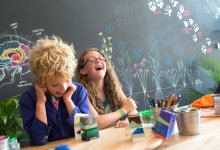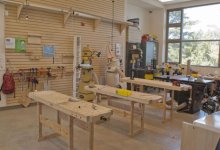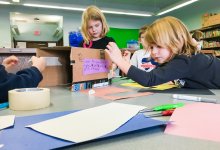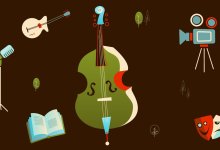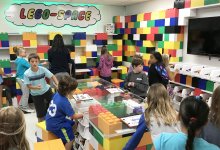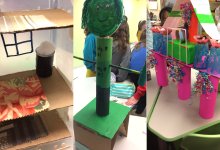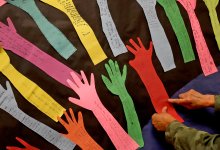Maker Education
How are educators harnessing the energy of the maker movement to inspire student exploration across multiple subjects? Discover resources and share advice.
Dedicating Space for Curiosity and Exploration
By turning a plain old hallway into a destination that every class visits regularly to tinker and play, a school made limited resources go further and saw student enthusiasm soar.3.6kYour content has been saved!
Go to My Saved Content.Learning Problem Solving and Growth Mindset in a Makerspace
Makerspaces build students’ cognitive abilities while fostering independence, perseverance, and self-regulation.9.4kYour content has been saved!
Go to My Saved Content.Makers Of The World: Engaging Kids Through Building and Design
Emily Pilloton, Founder of Studio H, a design/build class at REALM Charter School and Girls Garage both in Berkeley, California, describes how she “knew there were things about architecture and design that could have a deep impact in the classroom.”6.7kYour content has been saved!
Go to My Saved Content.Fostering Inclusion With a Student-Designed Sensory Path
When kids collaborated on making a sensory path for their school, what started as an occupational therapy zone became a welcoming, playful space that benefited all students.2.5kYour content has been saved!
Go to My Saved Content.5 Reasons Why Origami Improves Students’ Skills
Origami, the ancient art of paper folding, has applications in the modern-day classroom for teaching geometry, thinking skills, fractions, problem solving, and fun science.7.9kYour content has been saved!
Go to My Saved Content.Using Science to Bring Literature to Life
Combining science and literature can help students engage more deeply with both subjects.3.8kYour content has been saved!
Go to My Saved Content.What Maker Education and the Arts Teach Us About Creating Inclusive Learning Spaces
Making small changes to your classroom, assessment practices, and curriculum can help students of all gender identities feel included.331Your content has been saved!
Go to My Saved Content.Designing a School Makerspace
An approach to defining and designing the right space for your school.5.5kYour content has been saved!
Go to My Saved Content.Designed for Engagement
A school district uses monthly missions in its design studios to increase student and teacher engagement and foster self-directed learning.3kYour content has been saved!
Go to My Saved Content.Arts Integration: Resource Roundup
All points of arts integration -- from benefits and implementation to linking the arts with core curriculum -- are covered in this roundup of useful Edutopia blog posts, articles, and videos.3kYour content has been saved!
Go to My Saved Content.A Makerspace Built by Elementary Students
Third graders designed a makerspace for their school. Then they got their budget approved and built it.2.6kYour content has been saved!
Go to My Saved Content.Using a Makerspace for English and Humanities Instruction
Turning abstract concepts like symbolism and imagery into 3D representations develops deeper understanding and engagement.1.9kYour content has been saved!
Go to My Saved Content.How Students Can Tell Their Story on the Class Bulletin Board
Hallway bulletin boards are often created by teachers, but giving students more control nurtures their sense of belonging.925Your content has been saved!
Go to My Saved Content.9 Ways to Inspire Student Inventors
A collection of ideas to consider as you work to fuel your students’ curiosity.1.9kYour content has been saved!
Go to My Saved Content.Using Open-Ended Materials to Spark Curiosity
By designing learning experiences with a wide variety of loose parts, teachers make room for conversations—and relationships—to flourish.713Your content has been saved!
Go to My Saved Content.





